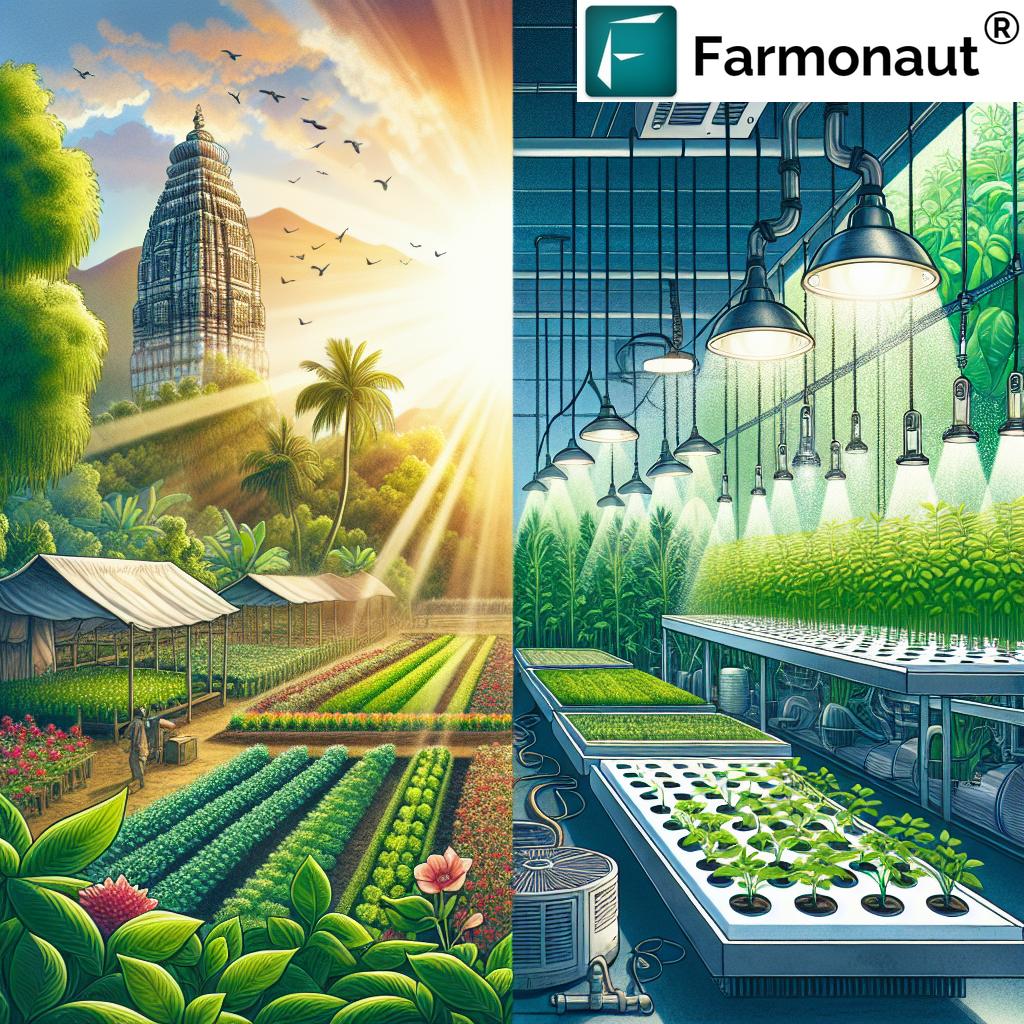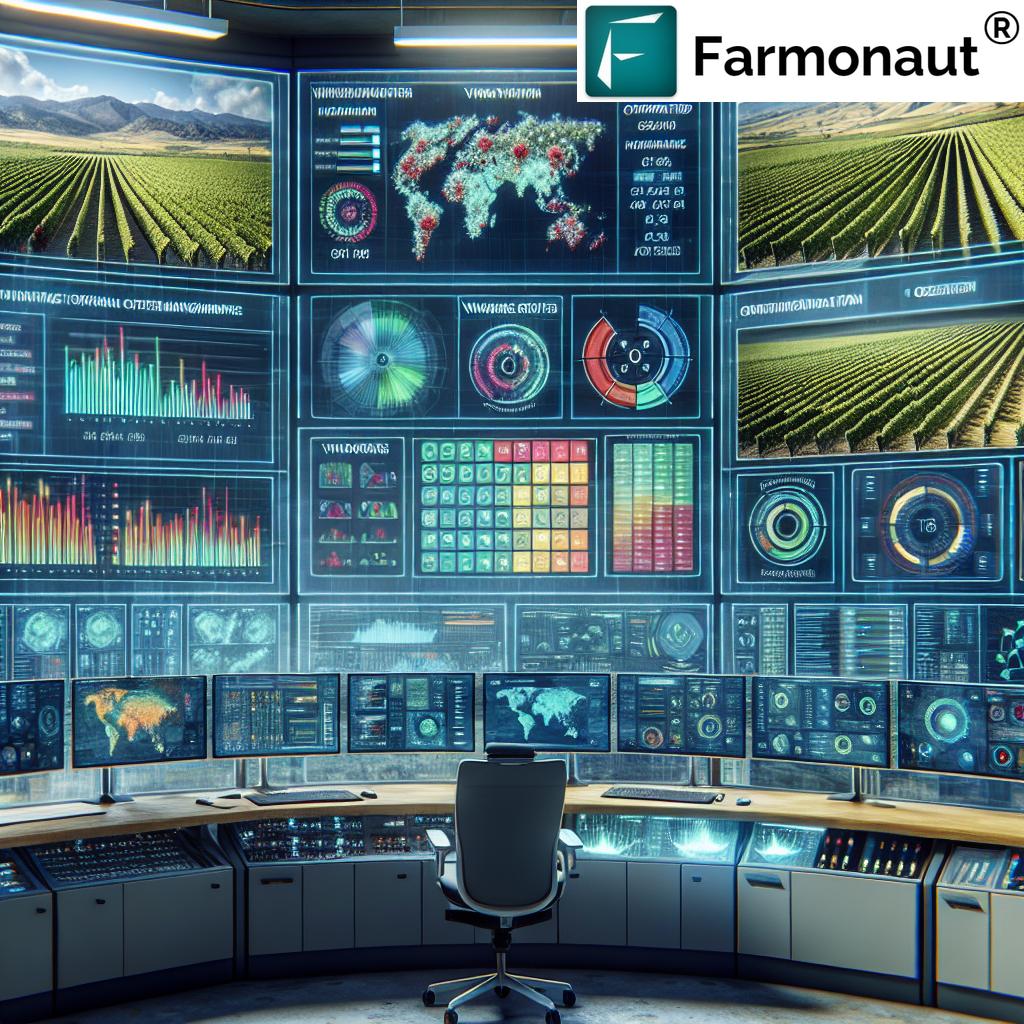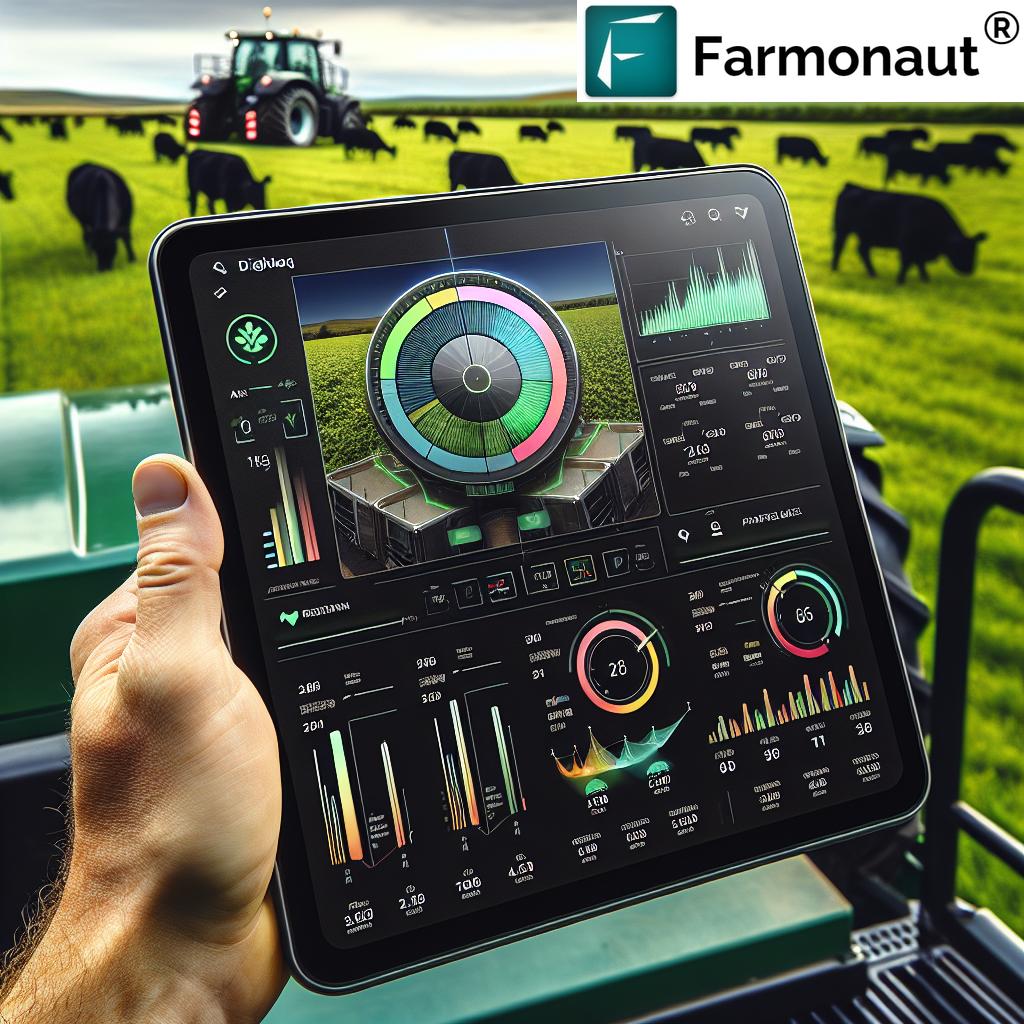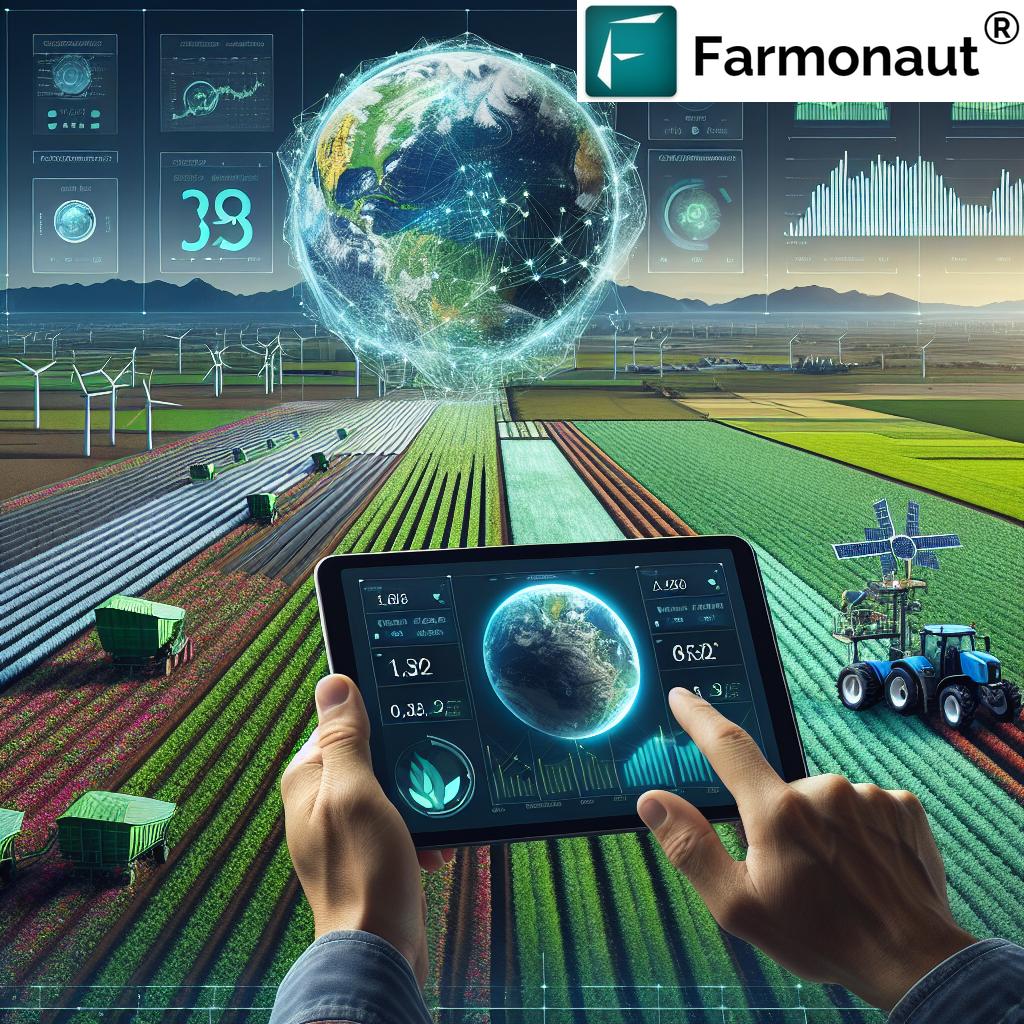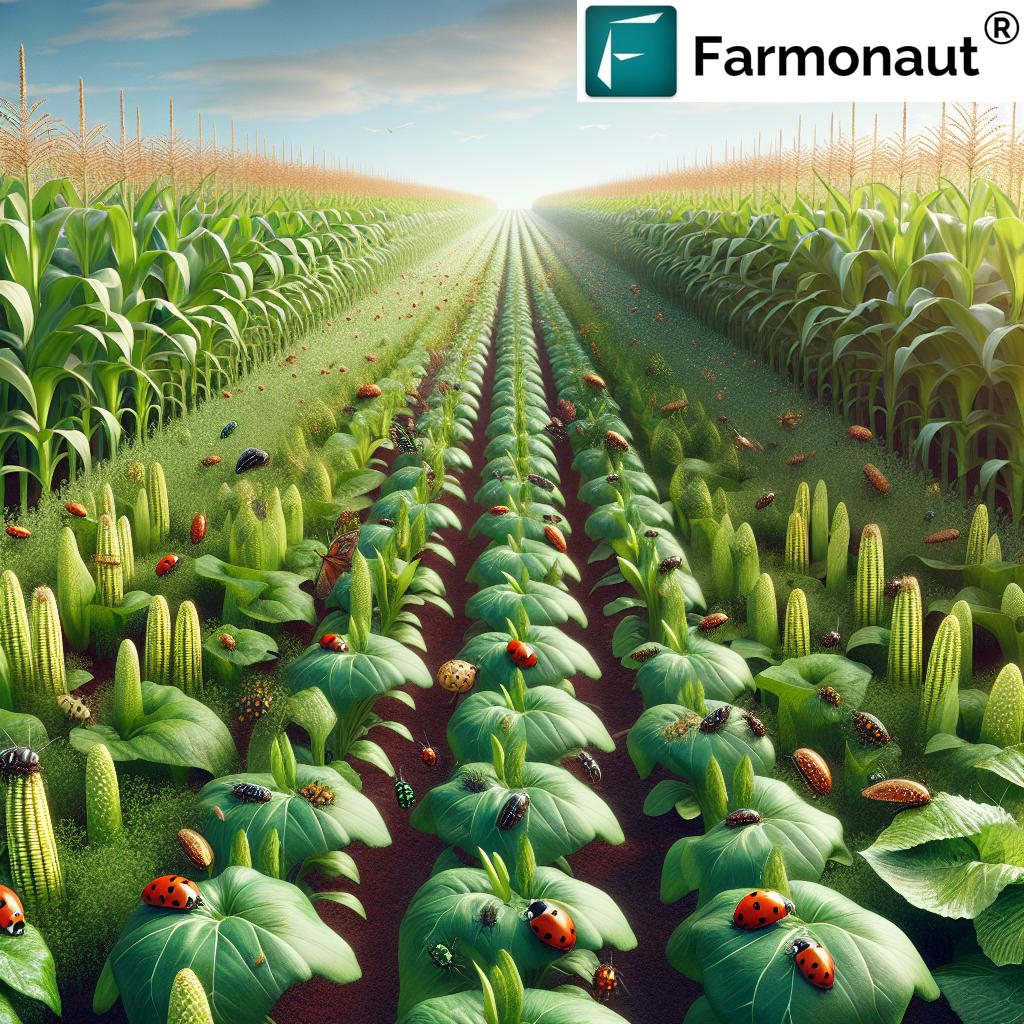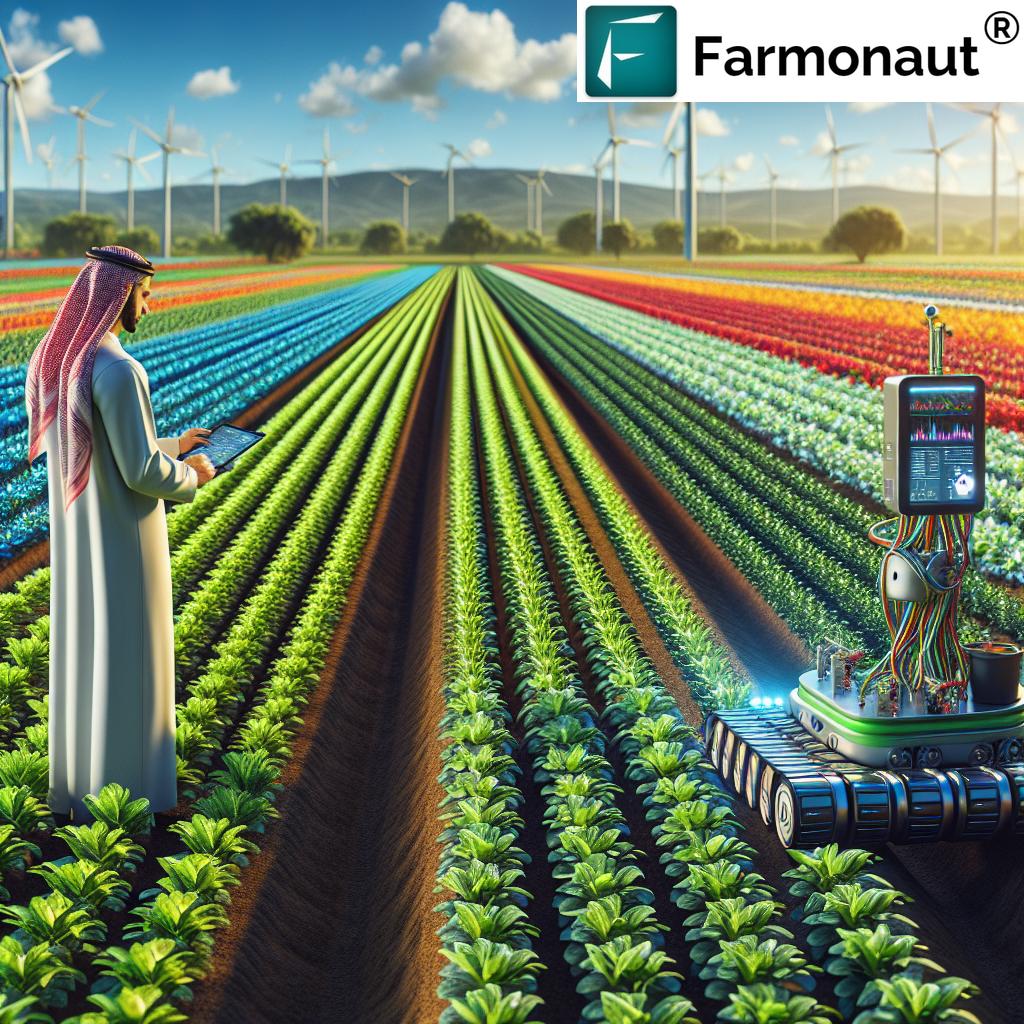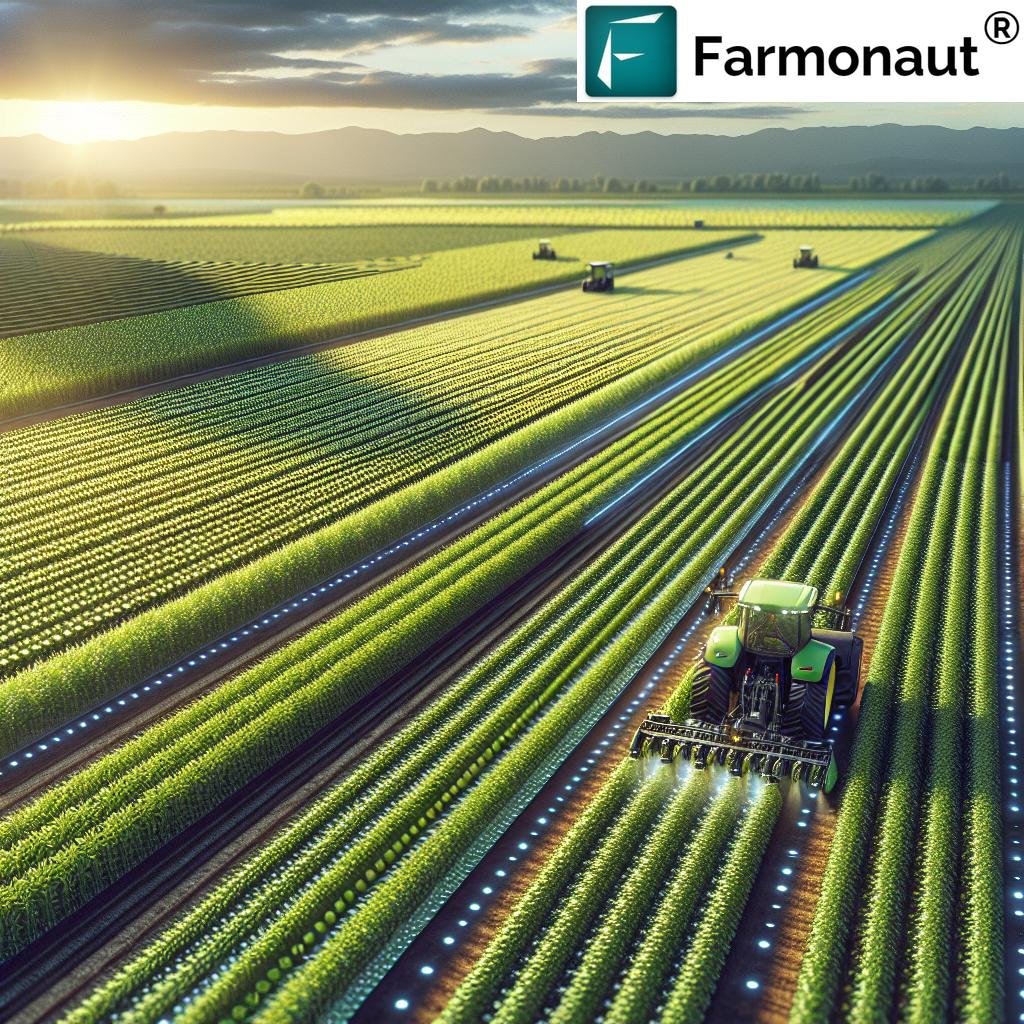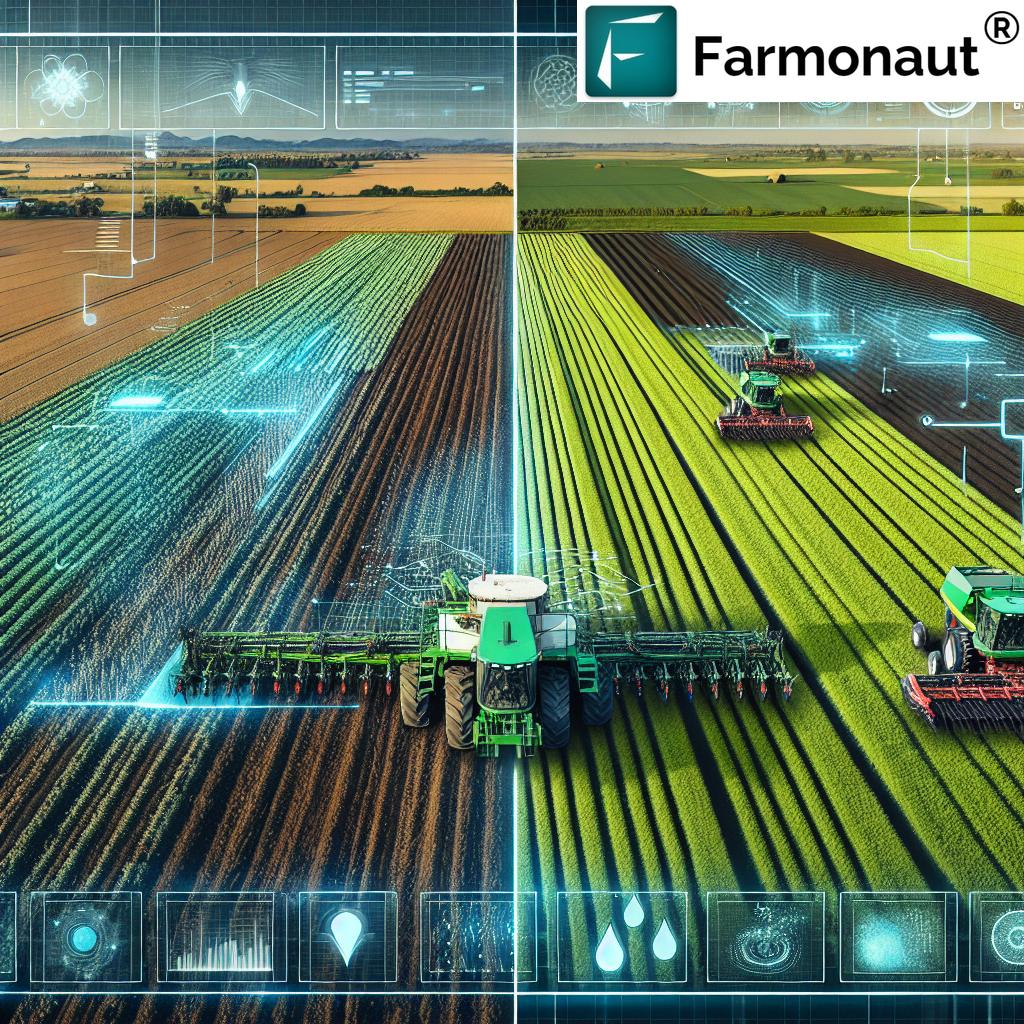How Does Precision Farming Work? 7 Powerful Tech Innovations
“Over 80% of precision farming systems use satellite imagery for real-time crop monitoring and management.”
Introduction: How Precision Farming Technology is Changing Agriculture
Precision farming, also referred to as precision agriculture, is transforming modern agriculture by leveraging a suite of advanced technologies—like GPS, IoT sensors, drones, and data analytics—to optimize farm management practices. These tools enable farmers to monitor soil health, precisely apply inputs (such as water and fertilizers), and make tailored, data-driven decisions based on real-time field conditions. This not only enhances farm productivity and crop yields but also reduces operational costs and supports environmental sustainability.
By integrating technology solutions and data science into every stage of farming—from planting to harvesting—precision agriculture enables smarter, more efficient, and eco-friendly operations. In this comprehensive guide, we’ll explore the powerful tech innovations behind modern precision farming, their key components, and their immense benefits for today’s and tomorrow’s farmers.
“Data analytics in precision agriculture can increase crop yields by up to 20% through optimized resource allocation.”
Key Components of Precision Farming
Modern precision farming combines hardware, software, and cutting-edge decision support systems to create holistic farm management platforms. Let’s break down the core components:
- Geospatial Technologies: GPS and GIS for field mapping and spatial analytics
- Remote Sensing: Drones and satellites for crop health imaging
- IoT Sensors: Real-time soil, weather, and crop monitoring
- Variable Rate Technology (VRT): Targeted input application for resource optimization
- Automated Machinery: Robotics and autonomous vehicles for efficiency
- Data Analytics & AI: Predictive modeling and actionable insights
- Software Integration: Cloud-based platforms for seamless data sharing
Each element plays a vital role in driving efficiency, reducing costs, and enabling sustainable agricultural practices on a global scale.
Comparative Feature Table: Powerful Tech Innovations in Precision Farming
| Tech Innovation | Core Function | Key Benefits | Estimated Crop Yield Increase (%) | Approx. Cost Reduction (%) |
|---|---|---|---|---|
| Satellite Imaging | Multispectral crop/soil monitoring | Early stress detection, irrigation optimization, scalable monitoring | 10–20% | 8–12% |
| IoT Sensors | Real-time soil & climate data | Precise irrigation, nutrient management, reduced water wastage | 8–15% | 10–15% |
| Drones | Field imaging & aerial spraying | Accurate pest monitoring, map-making, fast interventions | 5–12% | 5–10% |
| GPS & GIS | Precision mapping & field guidance | Reduces overlap, input waste, and increases uniformity | 7–15% | 8–12% |
| Automated Machinery | Autonomous tractors/robots | Labor savings, efficiency, uniform planting/harvesting | 6–12% | 10–20% |
| Variable Rate Technology (VRT) | Input application by need | Reduced fertilizer/pesticide waste, environmental protection | 8–13% | 10–16% |
| Data Analytics & AI | Predictive insights & recommendations | Informed decisions, risk reduction, yield optimization | 10–20% | 10–15% |
1. Geospatial Technologies: GPS & GIS in Precision Farming
Global Positioning System (GPS)
One of the foundations of precision farming is the Global Positioning System (GPS)—a satellite-based positioning system used to map fields accurately and guide farm machinery with sub-meter precision. GPS guides tractors and harvesters in planting, fertilizing, and harvesting processes, consistently minimizing overlap and resource wastage while maximizing field use. By leveraging accurate GPS data, farmers enjoy the benefits of consistent row spacing, reduced compaction, and uniform crop growth.
For example, GPS-guided auto-steering ensures tractors stay on their path, reducing fuel costs and saving valuable time during peak farming seasons.
Geographic Information Systems (GIS)
Geographic Information Systems (GIS) take precision farming to the next level by integrating spatial data from different layers (e.g., soil properties, moisture, topography, yield) for comprehensive farm management. By overlaying these layers of information, farmers can identify patterns of field variability—such as low-yield zones or areas prone to waterlogging—and make targeted management decisions to optimize inputs and increase yields.
- Identifies in-field variability for targeted interventions
- Supports mapping for variable rate seeding, fertilizing, and pesticide application
- Improves land and water management, reducing erosion risks
With modern large-scale farm management tools, like those on our platform, global mapping and spatial analytics are accessible via web or mobile for farms of any size.
2. Remote Sensing for Crop Monitoring: Drones and Satellites
Remote sensing harnesses drones and satellites equipped with high-resolution and multispectral cameras to regularly capture detailed imagery of fields. This “eyes-in-the-sky” approach provides timely data on soil health, crop growth, pest infestations, water stress, and nutrient deficiencies—without the need for manual field checks.
How Drones Advance Precision Farming
- Drone imagery covers thousands of hectares in hours, identifying issues even before visible symptoms appear
- Aerial spraying drones deliver pesticides, fungicides, or fertilizers precisely where needed, reducing chemical overuse and environmental impact
- Thermal and multispectral sensors help detect irrigation needs and plant health status
Remote sensing for crop monitoring enables timely interventions, reducing crop loss due to late detection of diseases or pests.
Satellite Imaging for Scalable Farm Management
Satellites provide large-scale, frequent, and unbiased monitoring over entire regions. Using satellite-based crop health monitoring, producers can track vegetation health indices (like NDVI), monitor field-level moisture, and detect anomalies automatically. This is especially effective for plantations and agri-businesses managing vast or remote fields.
- Automated alerts for stress or pest outbreaks enable fast field scouting
- Supports field-level reporting and historic trend analysis for better planning
We leverage remote sensing at Farmonaut, delivering actionable insights on irrigation needs, fertilizer requirements, and crop health via our mobile, web, and API-based solutions for seamless, remote farm management.
3. IoT Sensors in Agriculture: Unlocking Real-Time Soil and Climate Monitoring
Internet of Things (IoT) sensors in agriculture are transforming the way soil, water, and crop health data are collected and used. By deploying resilient, wireless sensors across fields, farmers can gather continuous, real-time data on:
- Soil moisture and temperature
- Nutrient levels (nitrogen, phosphorous, potassium, etc.)
- Microclimatic parameters (humidity, rainfall, solar radiation)
- Crop growth stages and plant health parameters
This granular, site-specific data empowers precision irrigation scheduling, reducing water wastage and ensuring crops receive the precise amount needed for optimal growth.
Smart Irrigation and Nutrient Application
With IoT soil health monitoring systems, triggers can be set up to automatically start or stop irrigation or dosing equipment. This results in:
- Higher water use efficiency (WUE)
- Reduced labor and input costs
- More uniform crop establishment and growth
Our cloud-based analytics interpret these data streams, generating actionable insights and advisory services. For example, Farmonaut’s Jeevn AI advisory system leverages both satellite and IoT sensor data to provide timely, crop-specific recommendations.
Benefits of IoT Sensors in Precision Farming
- Decrease in water and fertilizer waste due to data-driven application
- Minimizes environmental runoff, supporting carbon footprint management and sustainability goals
- Reduction in manual data recording and field scouting
IoT sensors are a backbone of smart agricultural practices for smallholder and large-scale farms alike, powering everything from crop yield prediction to resource management.
4. Variable Rate Technology (VRT): Targeted Application of Resources
Variable Rate Technology (VRT) is a core precision farming innovation—enabling the variable application of fertilizers, pesticides, and water across different field zones based on real-time data and field requirements. Rather than treating every hectare the same, VRT systems use field maps generated by GPS, drones, satellites, and sensors to create prescription maps.
How Variable Rate Application Works
- GIS platforms analyze spatial variability in soil, crop health, and yield
- Prescription maps are generated for resource application based on data layers
- VRT-enabled equipment varies seeding, irrigation, or chemical inputs as it moves across the field
This granular approach ensures optimal resource use, maximizes productivity, and reduces both farm expenses and environmental impact. For instance, high-fertility zones get only the nutrients they need, while smaller or stressed areas receive tailored support, preventing nutrient runoff and reducing costs.
- Reduced fertilizer and pesticide use by up to 20%
- Supports data-driven crop loan and insurance validation through traceable field data
Variable rate application is essential for sustainable, precision agriculture technology, and is made even more powerful when combined with IoT data streams and remote sensing imagery.
5. Automated Farm Machinery and Robotics
In the era of labor shortages and the push for greater operational efficiency, automated farm machinery—such as self-steering tractors, robotic seeders, harvesters, and autonomous weeders—are rapidly becoming standard equipment in advanced farming operations.
- Autonomous tractors use GPS and AI to plant seeds in perfectly straight lines, saving time and minimizing overlap
- Robotic harvesters pick crops at peak ripeness, reducing post-harvest losses and labor dependency
- Automated weeders target specific weeds using computer vision and AI, decreasing the need for broad herbicide applications
Core Benefits of Automated Farm Machinery
- Extends farm working hours (including night operations)
- Reduces input waste and labor costs
- Ensures uniform task execution, supporting higher yields
- Trackable via fleet management systems to monitor real-time machine location, status, and fuel use
With the integration of robotics, farms become more resilient, efficient, and ready for the challenges of a changing agricultural landscape.
6. Data Analytics and AI: From Big Data to Informed Farming Decisions
Modern data analytics for farming combines cloud computing, AI-driven modeling, and machine learning to turn raw sensor, imagery, and operational data into valuable, farm-level intelligence. Data analytics engines process vast sets of information—from weather forecasts and soil sensor feeds to satellite images—to provide predictive insights.
Precision Agriculture Technology: Predictive Modeling
- Crop yield prediction: AI algorithms analyze historic and real-time factors (weather, soil, crop growth) to project expected yields
- Early warning of pest/disease risks through detection of subtle field changes in imagery or sensor data
- Optimized input planning: Predicts when and where to irrigate, fertilize, or apply plant protection products for maximum ROI
Our AI and data analytics tools provide tailored recommendations to farmers, enhancing decision-making at every stage—whether on small kitchen gardens or mega plantations.
Benefits of Predictive, Data-Driven Agriculture
- Maximizes resource utilization and profitability
- Reduces guesswork in scheduling agricultural tasks (planting, spraying, harvesting)
- Improves resilience to unpredictable weather and climate
- Blockchain-based product traceability ensures transparency and trust throughout the agricultural supply chain
Integration of AI-based crop health monitoring and yield prediction delivers a true competitive advantage to progressive farmers.
7. Software Integration and Platforms: The Nerve Center of Precision Agriculture
To fully materialize the promise of precision farming, diverse technologies—ranging from IoT sensors to drone mapping and AI analytics—must be integrated within centralized management systems. Cloud-based farm management platforms provide:
- Unified dashboards for real-time monitoring of crop health, soil status, pest outbreaks, and machinery usage
- Data sharing and collaboration across multiple team members, agronomists, and organizations
-
API access for developers and institutions to integrate farm-level data (e.g., our Farmonaut API and
developer documentation)
Modern platforms act as the digital control center for the entire farm, streamlining workflow, data analytics, and field operations.
For example, our platform offers user-friendly, multilingual access via web, Android, and iOS apps—making precision agriculture technology affordable and accessible for individual farmers and agri-enterprises worldwide.
Farmonaut: Bringing Precision Farming to Your Farm
At Farmonaut, our mission is to democratize precision farming through advanced, satellite-based solutions that empower farmers globally—regardless of farm size or technical expertise.
- Our real-time crop health monitoring uses multispectral satellite imagery for instant field insights, enabling timely interventions and higher yields.
- AI-driven advisory (Jeevn AI) delivers personalized, actionable recommendations for optimizing planting, irrigation, and nutrient management.
- Tools for fleet management, carbon footprint monitoring, and product traceability via blockchain
promote sustainability, accountability, and transparency through the entire agricultural supply chain. - Our data-driven crop loan and insurance verification improves access to financing for farmers while lowering risks for financial providers.
- Seamless access via Android, iOS, and web, plus robust API integration for agribusinesses, developers, and institutions globally.
Whether optimizing crop management or meeting sustainability targets, we offer precision agriculture solutions that are cost-effective, easy to deploy, and measurable in their impact.
Benefits of Precision Farming Technology
- Increased efficiency: By aligning input application directly with field requirements, farmers reduce costs and minimize waste—translating to enhanced profitability.
- Environmental sustainability in agriculture: Targeted use of fertilizers and pesticides leads to a significant reduction in chemical runoff and negative environmental impacts. Learn more about monitoring your farm’s carbon footprint with Farmonaut.
- Enhanced crop yields: Data-driven, site-specific management enables the optimization of plant health and yield without expanding land use.
- Labor optimization: Automated systems and robotics streamline repetitive tasks, freeing human resources for strategic, value-adding work.
- Improved risk management: Predictive analytics and early warning systems minimize weather, pest, and disease-related losses.
Challenges and Considerations in Precision Farming
Despite its transformative benefits, precision farming does face several key challenges:
- High Initial Investment: Adopting new technology and equipment, such as variable rate applicators or drone systems, can be expensive—posing entry barriers for smallholders.
- Data management complexity: The sheer volume and variety of data streams require robust cloud storage, analytics engines, and tech literacy for effective utilization.
- Technological integration: Ensuring that all hardware components, sensors, and software platforms interoperably communicate is crucial for seamless workflows.
- Data privacy and security: Proper practices must protect farmer data ownership and shield sensitive farm information against unauthorized access or cyberattacks.
Our approach at Farmonaut addresses these issues by providing scalable, modular precision agriculture systems with best-in-class security, user-friendly interfaces, and affordable subscription models to lower barriers to high-tech adoption for all farmers.
Future Trends in Precision Farming Technologies
The advances in precision agriculture technology are continually reshaping the possibilities for global agricultural sustainability and productivity. Key trends include:
- Integration of AI and machine learning: Deeper, more accurate insights will optimize field operations, supporting everything from yield projections to autonomous weed control.
- Expansion of IoT applications: Sensors will become smaller, cheaper, and more versatile—offering hyper-local management and further automating irrigation, fertigation, and disease control.
- Emphasis on environmental sustainability in agriculture: Technologies such as carbon footprinting, water-saving irrigation, and biodiversity monitoring will be central to future operations (discover more about our carbon footprint tracking tools).
- Growth of blockchain-based traceability: As transparency becomes a market demand, blockchain will underpin trustworthy food supply chains (see: Farmonaut product traceability solution).
- Development of robust decision support systems: Smart platforms will interpret complex data sets, giving timely, field-specific recommendations to maximize profitability.
As precision farming continues to evolve, affordability and user-friendliness will be the keys to wider adoption, with companies like Farmonaut leading the way in making data-driven agriculture accessible to all.
FAQ: Frequently Asked Questions About Precision Farming
-
What is precision farming?
Precision farming (or precision agriculture) is a technology-driven approach that utilizes GPS, IoT sensors, drones, satellite imaging, and data analytics to optimize every stage of the farming process. It ensures the right amount of resources (seeds, water, fertilizer) are delivered to the right place and time, based on real-time data and field variability.
-
How do IoT sensors in agriculture improve efficiency?
IoT sensors monitor soil moisture, temperature, and nutrient levels in real-time. This supports precision application of water and fertilizers, reduces waste, and enables automated irrigation—improving crop health and lowering input costs.
-
What is variable rate application (VRT)?
VRT involves using maps generated from GIS, satellites, and sensors to apply inputs like fertilizers, pesticides, and seeds at different rates across a field, tailored to each area’s unique needs. This increases yields, conserves resources, and supports sustainable practices.
-
How does precision farming support environmental sustainability?
By ensuring precise input application, precision farming minimizes chemical runoff, lowers water wastage, and reduces the overall environmental impact of agriculture. Advanced tools like blockchain and carbon footprinting further enhance traceability and sustainability across supply chains.
-
Can small and medium farmers benefit from precision agriculture technology?
Yes! New technologies—like affordable satellite imagery, mobile apps, and cloud platforms—have made precision farming solutions accessible for farms of all sizes. With cost-effective tools, smaller producers can optimize productivity, manage risk, and compete in the modern market.
-
What are the main challenges faced in adopting precision farming systems?
The main challenges include the initial investment required; the need for data literacy; ensuring compatibility between various tech platforms; and protecting data privacy and security. Subscription-based and modular services, like those offered by Farmonaut, help reduce entry barriers and facilitate adoption.
-
How does data analytics for farming work?
Data analytics engines aggregate and process data from sensors, drones, and satellites to spot trends, detect anomalies, and predict yields or input needs. This enables informed decision-making and helps farmers achieve consistently better outcomes.
-
What is blockchain-based traceability in agriculture?
Blockchain traceability records each step of a product’s journey—from farm to market—on a secure, tamper-proof ledger. This ensures transparency, helps prevent fraud, and builds trust between producers, retailers, and consumers.
-
What support and training are available for farmers interested in precision farming?
Many platforms, including Farmonaut, provide step-by-step onboarding, multilingual help centers, video tutorials, and live chat assistance. Designed for simplicity, these services ensure that even farmers new to technology can easily access data-driven insights.
Try Farmonaut: Free Access and Subscriptions
Experience the benefits of real-time crop health monitoring, AI-powered advisories, and resource management with Farmonaut’s affordable subscription packages. Accessible on Android, iOS, and web, we offer flexible pricing for individual farmers, agri-businesses, and institutions—scale your solutions as your operation grows!
Integrate advanced tools with minimal barrier to entry, whether for a single field or thousands of hectares. Check out our plans below:
Ready to get started? Sign up now (for free) and revolutionize your farming with data-backed decision support!
Conclusion: The Future of Precision Farming
Precision farming represents a transformative shift in modern agriculture—one that leverages geospatial mapping, IoT sensors, robotics, remote sensing, and powerful data analytics to optimize every aspect of the production process. As challenges such as climate change, resource scarcity, and changing consumer demands intensify, the adoption of these technologies becomes not just an option, but a necessity for competitive, sustainable farming.
Solutions like Farmonaut make it possible for every farmer—from smallholders in remote regions to global agribusinesses—to harness satellite intelligence, automate management, and ensure both profitability and environmental stewardship. With continued advancements in AI, blockchain, and integrated farm management platforms, the promise of a data-driven, sustainable agricultural future is within reach for all.
Join the agricultural revolution. Embrace precision. Enhance productivity. Sustain the planet—one informed decision at a time.












